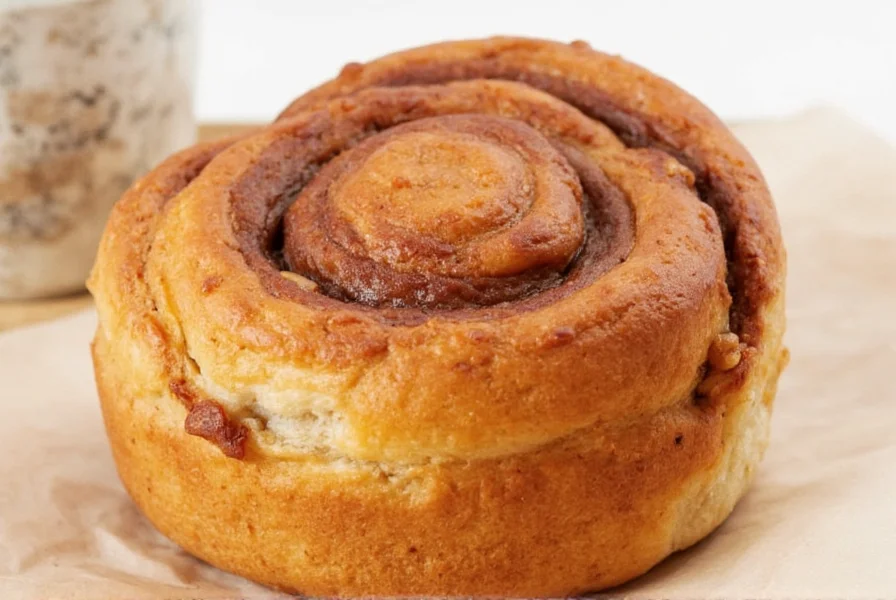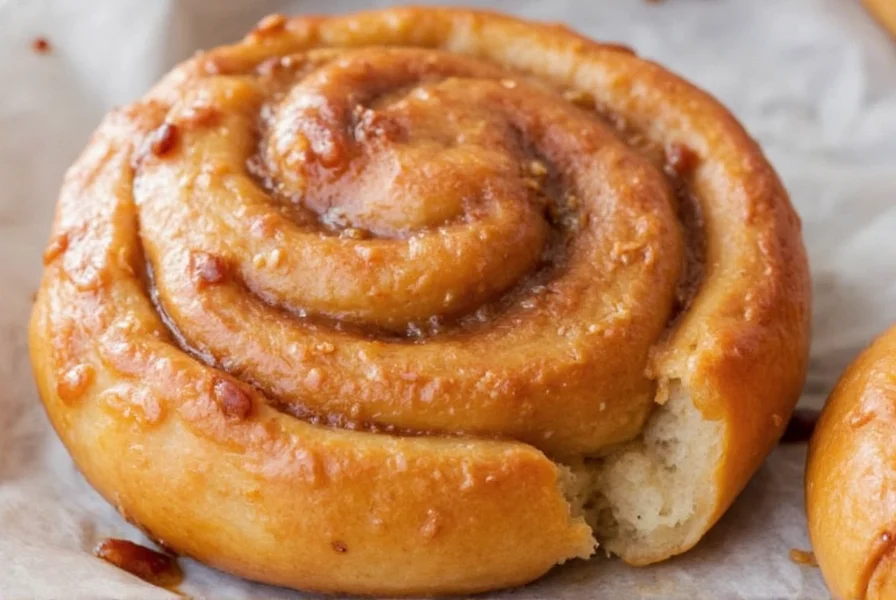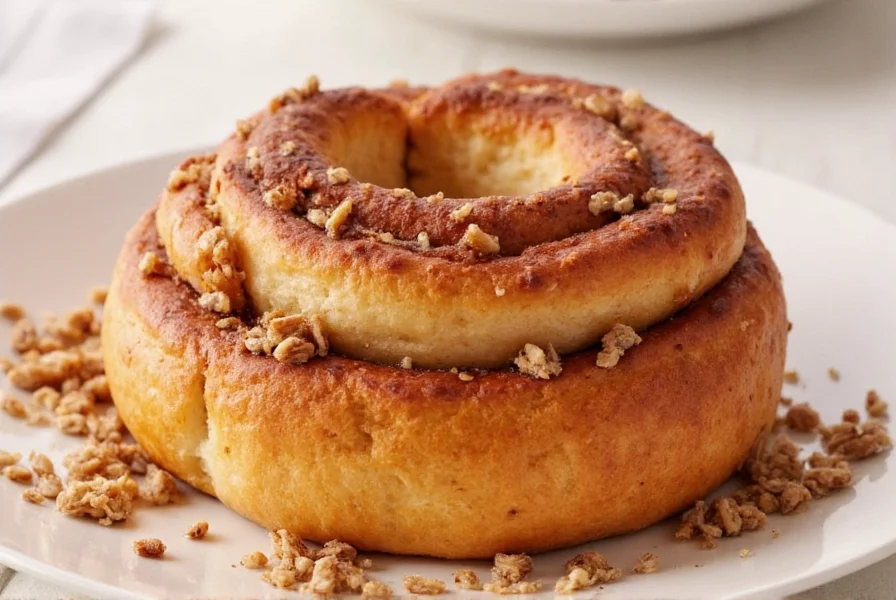The big Texas cinnamon bun represents a beloved regional specialty that has gained national popularity through food tourism and social media. Unlike regular cinnamon buns, these Texas-sized treats function as standalone breakfast items or decadent desserts, often served warm with extra icing drizzled tableside. Their massive size reflects Texas's "everything's bigger" cultural identity while maintaining the comforting flavors of traditional cinnamon rolls.
Origins of the Texas-Sized Cinnamon Bun
While cinnamon rolls have European origins, the oversized Texas version emerged in the late 20th century as bakeries across the Lone Star State began competing to create more indulgent breakfast experiences. Central Texas bakeries particularly embraced this trend, with establishments in Austin and Waco developing signature recipes that attracted food enthusiasts from across the country. The phenomenon accelerated when food bloggers and travel shows highlighted these "Texas-sized" pastries, transforming them from local specialties into nationally recognized treats.
Key Characteristics of Authentic Big Texas Cinnamon Buns
What separates genuine Texas-style cinnamon buns from ordinary oversized rolls? Three critical elements define the authentic experience:
| Feature | Standard Cinnamon Bun | Big Texas Cinnamon Bun |
|---|---|---|
| Diameter | 2-3 inches | 6-8 inches |
| Filling Ratio | 1:4 (filling:dough) | 1:2 (filling:dough) |
| Glaze Application | Light coating | Generous pour, often tableside |
| Common Additions | Raisins (optional) | Pecans, Texas honey, bourbon caramel |
The most authentic versions use a modified brioche dough that remains tender despite the large size, preventing the dense texture that often plagues oversized pastries. Texas bakeries frequently incorporate local ingredients like Hill Country honey or pecans from San Saba, creating distinctive regional variations. The cinnamon filling typically features a higher cinnamon-to-sugar ratio than standard recipes, delivering that signature spicy-sweet Texas kick.
Where to Find the Best Big Texas Cinnamon Buns
While many establishments claim to offer "Texas-sized" cinnamon buns, authentic experiences concentrate in specific regions:
- Central Texas: Look for family-owned bakeries in Austin and Waco that have been perfecting their recipes for decades. These often feature handmade dough and locally sourced ingredients.
- Hill Country: Several winery cafes incorporate Texas honey into their cinnamon bun recipes, creating unique flavor profiles.
- Dallas-Fort Worth: Modern bakeries offer innovative takes with additions like bourbon caramel or jalapeño-infused glazes.
When seeking authentic big Texas cinnamon buns, prioritize establishments that prepare them fresh daily rather than using frozen dough. The best versions show visible layers when pulled apart and maintain structural integrity despite their size—no collapsing or excessive sogginess. Many top bakeries now offer shipping options for those unable to visit Texas in person.

Enjoying Big Texas Cinnamon Buns Beyond the Bakery
While nothing compares to a freshly baked Texas cinnamon bun from a local bakery, home bakers can recreate the experience with proper technique. The key challenge lies in maintaining the delicate balance between size and texture—oversized buns often become dense if the dough formulation isn't adjusted.
Successful home versions require:
- Using bread flour for better structure
- Reducing yeast slightly to prevent over-rising
- Baking in specialized pans that support the bun's shape
- Applying glaze while still warm for optimal absorption
Many Texas bakeries now share "Texas-sized" adaptation tips for home bakers seeking to recreate the experience. The most helpful resources focus on dough hydration levels and baking temperature adjustments necessary for larger formats—critical factors that distinguish authentic big Texas cinnamon buns from merely oversized rolls.

Preserving the Texas Cinnamon Bun Tradition
As the popularity of big Texas cinnamon buns grows, maintaining authenticity becomes increasingly important. True Texas-style versions prioritize quality ingredients and proper technique over mere size. The best examples showcase the baker's skill in creating a harmonious balance between generous portions and delicate texture—a challenging feat that defines the specialty.
Food historians note that the Texas cinnamon bun phenomenon represents a modern evolution of traditional comfort foods, adapting European baking techniques to Texas's distinctive culinary identity. Rather than simply making larger portions, authentic Texas versions incorporate regional flavors and innovative preparations that have earned them a permanent place in Texas's rich food culture.
What makes a Texas cinnamon bun different from regular cinnamon rolls?
Texas cinnamon buns are distinguished by their substantial size (6-8 inches in diameter), higher filling-to-dough ratio, and frequent incorporation of regional ingredients like Texas honey or pecans. Unlike standard cinnamon rolls, they maintain structural integrity despite their size and often feature more complex flavor profiles with additions like bourbon caramel or locally sourced ingredients.
Where did big Texas cinnamon buns originate?
The oversized Texas cinnamon bun emerged in Central Texas during the late 20th century, with bakeries in Austin and Waco developing signature recipes. While cinnamon rolls have European origins, the Texas-sized version evolved as local bakeries competed to create more indulgent breakfast experiences that reflected Texas's "everything's bigger" cultural identity.
Can you freeze big Texas cinnamon buns for later consumption?
Yes, properly stored big Texas cinnamon buns freeze well for up to three months. Wrap them tightly in plastic wrap followed by aluminum foil, then place in a freezer bag. To serve, thaw at room temperature for two hours, then reheat in a 325°F oven for 8-10 minutes before adding fresh glaze. Avoid microwaving as it creates uneven texture.
What's the secret to preventing dense texture in oversized cinnamon buns?
The key to preventing dense texture in big Texas cinnamon buns lies in dough formulation and baking technique. Using bread flour provides better structure, slightly reducing yeast prevents over-rising, and specialized pans support the bun's shape during baking. Professional Texas bakeries also adjust hydration levels and baking temperatures specifically for larger formats to maintain that signature pull-apart texture.











 浙公网安备
33010002000092号
浙公网安备
33010002000092号 浙B2-20120091-4
浙B2-20120091-4